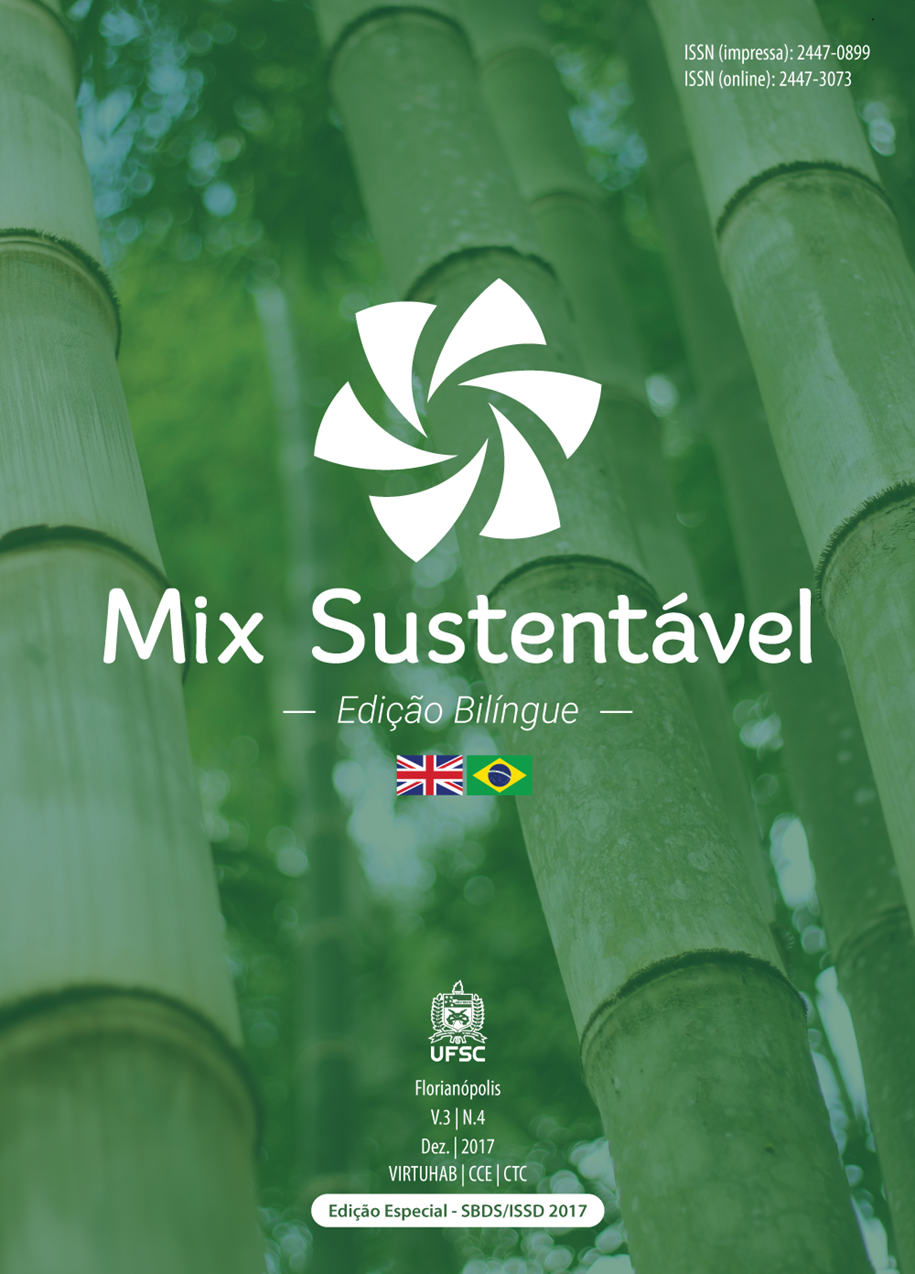ECOMATERIAIS BIOMIMÉTICOS, UM CAMINHO EFICIENTE PARA A SUSTENTABILIDADE
DOI:
https://doi.org/10.29183/2447-3073.MIX2017.v3.n4.29-45Palavras-chave:
Biomimicry, Eco materials, Design, Sustainability.Resumo
Este artigo tem o intuito de demonstrar como a Biomimética colabora na criação de novos materiais eco-eficientes e inovadores através da análise de alguns exemplos, tais como: os materiais hidrofóbicos e autolimpantes baseadosna planta Lótus, dando origem a tintas e revestimentos que não se molham nem se sujam; materiais hidrodinâmicos baseados na pele do tubarão que deram origem a tecidos que diminuem o atrito e aumentam o desempenho de atletas
de natação; materiais aderentes baseados nas batas da lagartixa, que possibilitam superfícies super aderentes de fixação de carpete sem necessidade de colas; materiais para captação de água baseados no besouro da Namíbia, que
possibilitam produtos como o Warka Water capaz de armazenar água do ar atmosférico em regiões de escassez; e por fim, materiais despoluentes e autolimpantes baseado na fotossíntese das folhas, que permitem o revestimento de módulos construtivos em fachadas capaz de ajudar a despoluir vias de grande fluxo de passagem de carros. Tal enfoque coloca em evidência a utilização da natureza como fonte de inspiração para criação destes novos materiais e demonstra o grande potencial de aplicação destes em projetos de Design e Arquitetura, evidenciados nestes exemplos que estão
em grande consonância com o cenário de sustentabilidade.
Referências
ARNAL, I. P. Generación S - una nueva generacion de materiales sustenibles. Barcelona, Catalunha: Ed Ignasi Perez Arnal, 2008.
ARNAL, I. P.; SAUER, B.; NAVARRO, J. G.; LEFTERY, C. Eco productos, en la arquitectura e el diseño. Barcelona, Catalunha: Ed Ignasi Perez Arnal, 2008.
BENYUS, J. M. Biomimética: Inovação inspirada pela natureza. 6ª ed. São Paulo: Ed. Pensamento- Cultrix, 1997.
BONSIEPE, G. Diseño industrial. Madri: Alberto Corazón Editor, 1978.
FORNIÉS, I. L. Modelo metodológico de Diseño conceptual con enfoque biomimético. 2012. 319p. Tese (Doutorado) – Universidad de Zaragoza, Zaragoza/España, Escuela de Ingeniería y Arquitectura, Departamento de Ingeniería de Diseño y Fabricación.
LIUA, K., JIANG, L. Bio-inspired design of multiscale structures for function integration. Nano Today. n 6, p. 155—175. Elsiever, 2011.
MACEDO, F. H. T. M. B. Qualidades expressivas dos eco-materiais. 114p. Dissertação de Mestrado em Arquitetura, Universidade Técnica de Lisboa - Faculdade de Arquitectura Lisboa, FAUTL, Dezembro, 2010.
MANZINI, E.; VEZZOLI, C. O desenvolvimento de produtos sustentáveis: os requisitos ambientais dos produtos industriais. São Paulo: Edusp, 2002.
SAUER, B. “Materializar la ecologia. ” In Eco productos, en la arquitectura e el diseño, de
Ignasi Perez Arnal, Bruno Sauer, Justo Garcia Navarro e Chris Lefteri, 13-14. Barcelona: Ed
Ignasi Pérez Arnal, 2008.
SOARES, T. A Biomimética e a Geodésica de Buckminster Fuller: Uma Estratégia de Biodesign. 2016. 315 p. Dissertação (mestrado) – Universidade Federal de Pernambuco, Recife, Departamento de Design do Centro de Artes de Comunicação.
VERSOS, C. A. M. Design biônico: A natureza como inspiração criativa. Dissertação (Mestrado). 2010. 186p - Universidade da Beira Interior, Covilhã, Departamento de engenharia Eletromecânica.
Downloads
Publicado
Edição
Seção
Licença
Aviso de Direito Autoral Creative Commons
1. Política para Periódicos de Acesso Livre
Autores que publicam nesta revista concordam com os seguintes termos:
a. Autores mantém os direitos autorais e concedem à revista o direito de primeira publicação, com o trabalho simultaneamente licenciado sob a Licença Creative Commons Attribution que permite o compartilhamento do trabalho com reconhecimento da autoria e publicação inicial nesta revista.
b. Autores têm autorização para assumir contratos adicionais separadamente, para distribuição não-exclusiva da versão do trabalho publicada nesta revista (ex.: publicar em repositório institucional ou como capítulo de livro), com reconhecimento de autoria e publicação inicial nesta revista.
c. Autores têm permissão e são estimulados a publicar e distribuir seu trabalho online (ex.: em repositórios institucionais ou na sua página pessoal) a qualquer ponto após o processo editorial, já que isso pode gerar alterações produtivas, bem como aumentar o impacto e a citação do trabalho publicado (Veja O Efeito do Acesso Livre).




